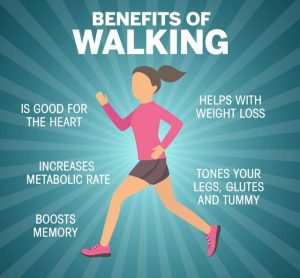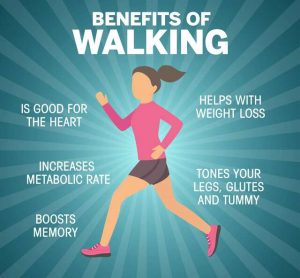 What are the differences between walking and running?
What are the differences between walking and running?
The article in brief:
- There are many health benefits that can be gained from both running and walking.
- Running can help you lose weight faster, with a higher risk of injury.
- Walking is a great place to start if you’ve never exercised before.
Both walking and running are excellent cardiovascular workouts, but is walking as good for your health as running?
Both are exercises that you can do whenever you want and wherever you choose. It could be a jog around the park or a walk along the beach. You can do it with a friend or take some time for yourself and explore the area.
So how do you decide what’s best for you?
Let’s take a look at the benefits each can offer, as well as some of the associated risks.
Also Read: Weight bench exercises for beginners
 Benefits of walking and running
Benefits of walking and running
There are benefits that apply to both walking and running, both of which can:
- Elevate the mood.
- Improve sleep.
- Increase your energy levels.
- Reduce the risk of hypertension.
- Reduce the risk of diabetes.
- Reduce the risk of heart disease.
- Reduce the risk of cancer.
- I would decrease cholesterol levels.
- Decrease the risk of age-related cataracts.
- Help you live longer.
Any cardiovascular exercise is a benefit to our health.
 Elevate the mood
Elevate the mood
We live in an age where everyone is busy all day. Entering the time to move can also seem like an impossible task. However, exercise can improve our mood and help with depression and concentration. It offers us precious time, away from the commitments we face day by day. It’s so nice to be able to disconnect for a while.
When we exercise, we increase the level of hormones called endocannabinoids. These hormones are opioids and have a cannabis-like effect on our bodies. They produce a feeling of euphoria, reduce anxiety and reduce the ability to feel pain.
Due to the increased blood flow to our brain when we exercise, other hormones called endorphins are released. Endorphins are our natural antidepressants and have been shown to be useful for treating depression.
Exercise makes us feel good about ourselves and therefore increases our confidence and self-esteem.
Also Read: How to Get Biceps at Home in 1 week
 Improve sleep
Improve sleep
Stress and inactivity can interfere with our ability to sleep well and our appetite. Exercise helps us have higher energy levels and release good hormones, which can help us sleep better.
Decreases the risk of arterial hypertension
High blood pressure or simply hypertension can be kept under control by regular exercise. Being overweight, stressed, and inactive are all factors that can lead to high blood pressure. Exercise can help with these risks and lead to lower blood pressure.
It decreases the risk of diabetes
Being overweight carries a higher risk of developing diabetes. Exercise can help with weight loss, reducing the risk of type 2 diabetes by up to 58%. Being more active, in combination with a healthy diet, will lower blood sugar levels and increase insulin sensitivity.
Reduces the risk of heart disease
Having a healthy heart decreases the risk of coronary heart disease. Coronary heart disease is caused by a buildup of plaque in the arteries that supply oxygen-rich blood to the heart. Exercise helps keep our arteries more flexible and able to provide a good blood supply. Being fit and active can reduce the risk of cardiovascular disease, including coronary heart disease, by up to 50%.
The heart is basically a muscle and is responsible for pumping oxygen-rich blood throughout our body. Just like all other muscles in our body, it benefits from regular exercise.
Cardiovascular exercise will help our hearts get stronger and work more efficiently.
Doing exercises that increase heart rate, even housework itself has been shown to help reduce the risk of stroke and heart attack.
Also Read: How To Increase Bicep Size Without Weights
Decreases the risk of cancer
Let’s be honest, none of us would ever want to go to the doctor and hear the dreaded word that begins with C. Exercise can reduce the risk of this happening. It can reduce the risk of developing certain types of cancer, including breast cancer, endometrial cancer, and colon cancer if we exercise regularly.
This is because regular exercise can lower the levels of some cancer-associated hormones and improve the digestive system. By combining these factors with maintaining a healthy weight and an adequate immune system, it allows us to fight many diseases.
Decreases cholesterol levels
We all need cholesterol, a thick fatty substance found in the cells of our body. It helps our body make hormones and vitamin D and is also found in bile, which is used to digest food. But there are the good guys (HDL) and the bad guys (LDL), in large quantities.
Low-density lipoprotein (LDL) can create a plaque that builds up in the arteries. High-density lipoprotein (HDL) carries LDL into the liver which then excretes it from the body.
Exercising can help raise your HDL level and lower your LDL level, so it helps the good guys fight the bad guys.
Reduces the risk of age-related cataracts
Cataracts form when we are elderly, due to a buildup of proteins on the lens of the eye. This is what makes our vision cloudy.
Exercising has also been shown to reduce the risk of developing cataracts.
Also Read: Practical Guide On How To Train At Home Without Going To The Gym
Help you live longer
We can’t deliver the secret of immortality to you, however, research has shown that moderate exercise can extend life by up to three years. When we exercise, our bodies become fitter and healthier, and more efficient at fighting disease.
Differences between running and walking
We’ve covered some of the benefits that both running and walking offer. Now let’s take a look at the other pros and cons of each.
Run
 The benefits of running include:
The benefits of running include:
- Faster weight loss.
- Appetite regulation.
When we run we spend more energy than when we walk, which can lead to faster weight loss. Energy is consumed 2.5 times faster when running than when walking. This applies whether you are running on a track or on a treadmill at the gym. Of course, this means that the more energy we expend, the more calories we burn.
As you know, if we burn more calories than we consume, we lose weight. For fun, try using a calorie counter like this one to keep track of the number of calories you burn.
The result is that you would have to walk for much longer than running to get the same number. It takes much less time to run a kilometer than it takes to walk it. A study has shown that even if those who walk increase the kilometers traveled, the weight loss of those who run is still greater.
A recent study also suggests that running regulates appetite more than walking.
The experiment was the following: a buffet was prepared for a group made up of runners and people walking, after they had made some movement; the runners consumed nearly 200 fewer calories than they had burned, while the others consumed nearly 50 more calories than they had burned. Researchers believe this may be due to increased levels of the peptide hormone YY, which can suppress appetite.
Also Read: Running is good for your health
The downsides of running include:
- Changes to your immune system.
- Health hazard.
- Increased risk of injury.
Running a long distance can change your immune system and leave you exposed to infections for up to 72 hours after your workout or marathon.
While we have already found that walking and running are good for our heart health, running too much could be a health hazard. One study found that the death rate of strenuous joggers is the same as that of people who do not exercise at all.
Whether you run on the pavement, on a track, or explore the parks in your area, there is an increased risk of injury associated with running.
When you run, you move at a fast pace and there are more chances of you falling and hurting yourself.
Running is a high-impact exercise that can lead to musculoskeletal injuries, especially if we overdo it. These include:
Runner’s knee
It is a common injury when overdoing it. It happens when the patella cartilage wears down. You may experience pain when sitting with your knees bent for too long when doing stairs or squats.
Achilles tendonitis
It happens when the Achilles tendon, which joins the calf to the back of the heel, becomes inflamed or irritated. This can be caused by repetitive tendon stress from running long or not stretching the calf muscles properly before running.
Also Read: How To Increase Bicep Size Without Weights
Periostitis
It causes pain in the front or side of the leg due to small tears in the muscles around the shin (tibia). This can happen after a change in your running routine, such as one longer or going more often. Runners with flat feet or high arches are more prone to this type of injury.
Muscle injuries
They occur when we stretch too much and a small tear may occur. The muscles that are easiest to tear are the hamstrings, quadriceps, calf, or groin.
Plantar fasciitis
It is the name for small tears or inflammation in the fascia of tendons and ligaments that run from the heel to the toes.
Stress fractures
They most commonly occur in the shins, feet, or heels. It is a small fracture in the bone that causes pain. It can also be caused by too much workload or too little stretching.
Iliotibial band syndrome
It causes pain on the outside of the knee. The iliotibial band is a ligament that runs from the outside of the knee to the top of the hip. This ligament can thicken by rubbing against the knee bone and causing inflammation.
Also Read: How to Get Biceps at Home in 1 week
To walk
 The benefits of walking include:
The benefits of walking include:
- Less risk of injury.
- Burn more fat.
- A good way to start exercising.
- It is easier to walk with a friend.
Walking is a low-impact exercise and therefore puts less strain on our feet and joints. As a result, there is a lower risk of injury. Also, moving at a slower pace means you are more likely to see bumpy pavement or tree roots sticking out and therefore not trip and fall.
When we walk we work at low intensity and the fat is used to fuel the energy we consume extra. You won’t lose weight just by walking; it is also necessary to combine it with dietary changes.
There may be medical reasons why running may not be good for you and it would be better to walk. Also, if you’re not used to exercising, walking is a good place to start.
Sometimes we are more likely to exercise if someone does it with us. Walking with a friend and chatting can make time pass faster.
The downsides of walking include:
- Slower weight loss.
Since walking doesn’t consume as much energy as running, while you can still lose weight, weight loss will be slower. This is because you are burning fewer calories.
Basically, there are no negative aspects, walking half an hour a day is good, at your own pace, for all ages.
Also Read: Gaining Muscle Mass
Having shown you the pros and cons, is walking as good as running?
You may think of exercise as a form of medicine, for your overall health and well-being. As with any medicine, the right dosage is important.
Regardless of whether you walk or run, any exercise you do is better than no exercise at all. If you like what you are doing, the more likely you are to keep doing it. If you still can’t decide, you can always do a little of both.

Hi, I am Matt Storace and I am a former personal trainer and founder of Beast Biceps. We had to find ways to train at home. When I started looking for the equipment I needed, I quickly realized that there were no good resources online. So I created Beast Biceps. It is a treasure trove of information developed from my experience and research. Read More Here
